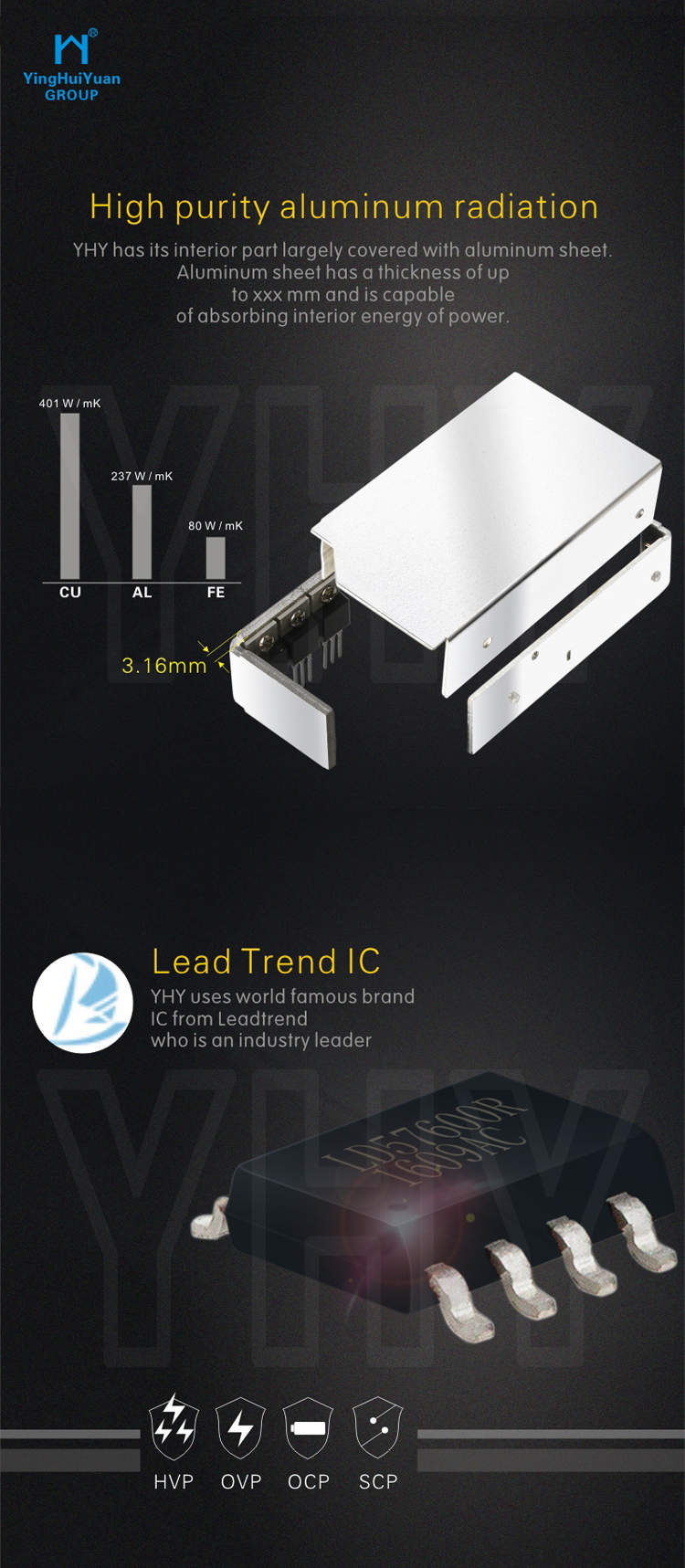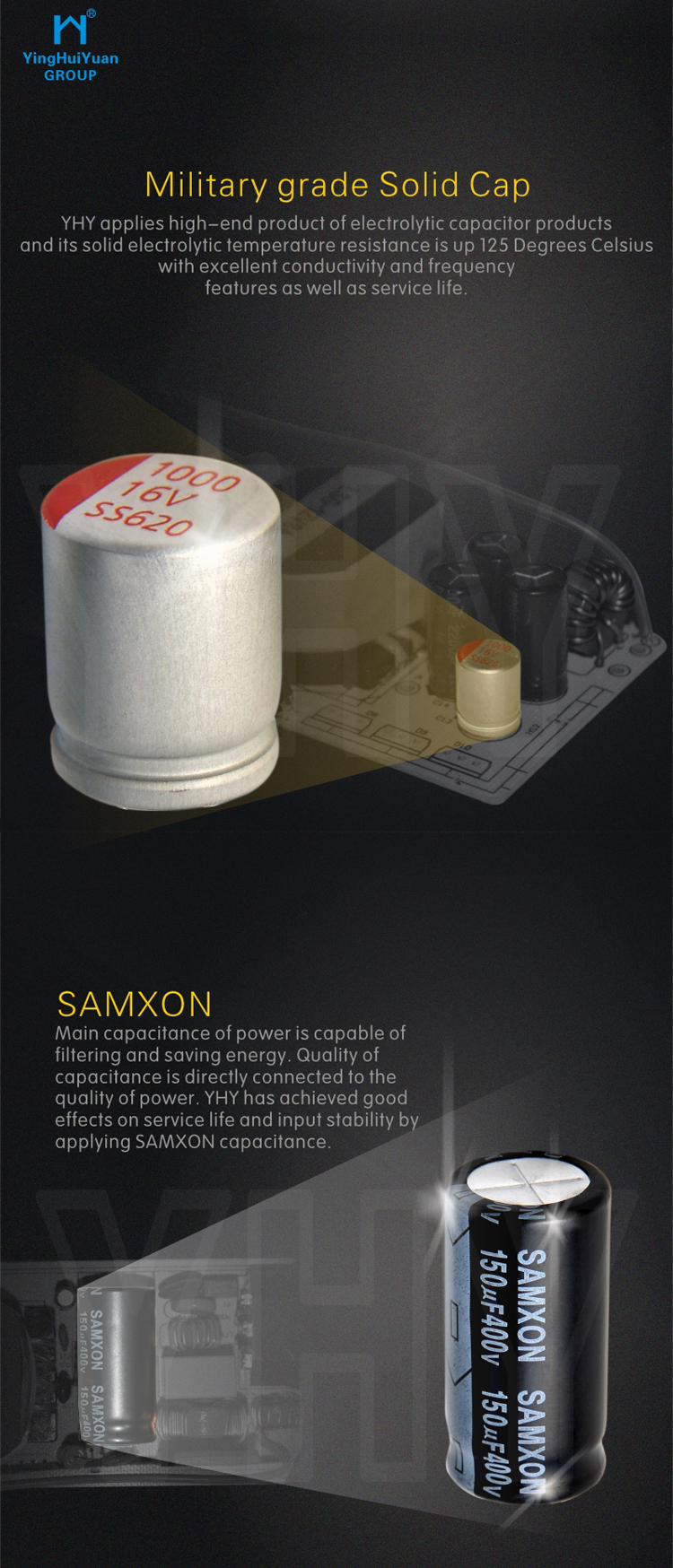
Privacy statement: Your privacy is very important to Us. Our company promises not to disclose your personal information to any external company with out your explicit permission.
![]() August 23, 2022
August 23, 2022
Switching power supply is a kind of power supply that uses modern power electronics technology to control the ratio of time when the switch is turned on and off, and maintains a stable output voltage. The switching power supply is generally composed of a pulse width modulation (PWM) control IC and a MOSFET. With the development and innovation of power electronics technology, switching power supply technology is constantly innovating. At present, switching power supplies are widely used in almost all electronic devices due to their small size, light weight and high efficiency. It is an indispensable power supply method for the rapid development of the electronic information industry.
Switching power supplies are said to be relatively linear. The input terminal directly converts the alternating current into direct current, and then under the action of the high-frequency oscillation circuit, the switching tube is used to control the on and off of the current to form a high-frequency pulse current. With the help of an inductor (high-frequency transformer), a stable low-voltage direct current is output. Since the core size of the transformer is inversely proportional to the square of its operating frequency, the higher the frequency, the smaller the core. This greatly reduces the transformer and reduces the weight and volume of the power supply. And because it directly controls DC, this power supply is much more efficient than a linear power supply. This saves energy, so it is favored by people. However, it also has the disadvantage that the circuit is complicated, the maintenance is difficult, and the pollution to the circuit is serious. The power supply is noisy and is not suitable for use in some low noise circuits.

The switching power supply is generally composed of a pulse width modulation (PWM) control IC and a MOSFET. With the development and innovation of power electronics technology, the importance of switching power supplies to almost all electronic devices is characterized by small size, light weight and high efficiency.
Switching power supply classificationAccording to the way in which the switching devices are connected in the circuit, the switching power supply can be generally divided into three types: a series switching power supply, a parallel switching power supply, and a transformer switching power supply. Among them, the transformer type switching power supply can be further divided into: push-pull type, half-bridge type, full-bridge type, etc.; according to the excitation of the transformer and the phase of the output voltage, it can be further divided into: forward type, flyback type, single type A variety of styles and double-excited.

The ordinary power supply is generally a linear power supply, and the linear power supply refers to a power supply in which the adjustment tube operates in a linear state. In the switching power supply is different, the switch tube (in the switching power supply, we generally call the adjustment tube called the switch tube) is working in the open and closed state: open - the resistance is small; off - the resistance is very Big.

Switching power supply is a relatively new type of power supply. It has the advantages of high efficiency, light weight, high and low voltage, and high output power. However, since the circuit operates in the switching state, the noise is relatively large. Through the following figure, let's briefly talk about the working principle of the step-down switching power supply. As shown in the figure, the circuit is composed of a switch K (a triode or a field effect transistor in the actual circuit), a freewheeling diode D, a storage inductor L, and a filter capacitor C. When the switch is closed, the power supply supplies power to the load through the switch K and the inductor L, and stores part of the electrical energy in the inductor L and the capacitor C. Due to the self-inductance of the inductor L, after the switch is turned on, the current increases relatively slowly, that is, the output cannot immediately reach the power supply voltage value. After a certain period of time, the switch is turned off. Due to the self-inductance of the inductor L (which can be compared with the image, the current in the inductor has an inertial effect), the current in the circuit will remain unchanged, that is, the flow will continue from left to right. This current flows through the load, returns from the ground, flows to the positive terminal of the freewheeling diode D, passes through the diode D, and returns to the left end of the inductor L, thereby forming a loop. The output voltage can be controlled by controlling the time the switch is closed and open (ie, PWM - Pulse Width Modulation). If the output voltage is controlled by detecting the output voltage to keep the output voltage constant, this achieves the purpose of voltage regulation.
The common power supply and the switching power supply have the same voltage adjustment tube, and the feedback principle is used for voltage regulation. The difference is that the switching power supply is adjusted by the switch tube, and the common power supply is generally adjusted by the linear amplification area of the triode.
In comparison, the switching power supply has low energy consumption, and the application range of the AC voltage is wide, and the ripple coefficient of the output DC is better, and the disadvantage is the switching pulse interference.
The main working principle of the ordinary half-bridge switching power supply is that the switching tubes of the upper bridge and the lower bridge (the switching transistor is VMOS when the frequency is high) are turned on. First, the current flows in through the upper bridge switching tube, and the energy is concentrated by the storage function of the inductor coil. In the coil, the upper bridge switch is finally closed, the switch tube of the lower bridge is opened, and the inductor and the capacitor continue to supply power to the outside. Then turn off the lower bridge switch, then open the upper bridge to let the current enter, and then repeat, because the two switches are to be turned on and off, so called the switching power supply.
The linear power supply is different. Because there is no switch intervention, the water supply pipe has been draining water. If there are many, it will leak out. This is the adjustment heat of some linear power supplies that we often see. Unfinished electrical energy is converted into heat. From this point of view, the conversion efficiency of the linear power supply is very low, and when the heat is high, the life of the component is necessarily lowered, which affects the final use effect.

The power regulating tube of the linear power supply always operates in the amplification area, and the current flowing is continuous. Due to the large power loss on the adjustment tube, a large power adjustment tube is required and a large-sized heat sink is installed, which is severe in heat generation and low in efficiency. Generally 40% to 60%, he has to say that he is a good linear power supply. The linear power supply works in such a way that he has to press the device from high voltage to low voltage. Generally, it is a transformer, and there are other like KX power supplies, and then rectified to output DC voltage. As a result, his volume is large, heavier, less efficient, and heavier. He also has his advantages: small ripple, good adjustment rate, and small external interference. Suitable for use with analog circuits, various types of amplifiers, etc.
Switching power supply. Its power device works in the switching state. When the voltage is adjusted, the energy is temporarily stored by the inductor coil, so that its loss is small, the efficiency is high, and the heat dissipation requirement is low, but it also has a transformer and a storage inductor. Higher requirements are to be made with materials that have low loss and high magnetic permeability. Its transformer is a small word. The total efficiency is 80% to 98%. The efficiency of the switching power supply is high but the volume is small. However, compared with the linear power supply, there is a certain discount on the voltage and current regulation rate.
Special requirements for AC power supply for radio communication, such as amateur radio:
1. The radio uses a relatively standard outdoor antenna feeder system. When the coaxial cable shielding layer does not participate in the radio transmission and reception, it mainly considers the ESD of the power supply and the anti-interference ability of the power supply voltage regulation part. The reason is that the power supply load impedance changes greatly during the transmission. If the processing is improper, the voltage regulation system will be sampled and executed. Therefore, a low-pass filter must be installed between the sampling and output of the voltage stabilization system.
2. The radio uses a very random outdoor antenna feeder system, and the coaxial cable shielding layer participates in radio transmission and reception. At this point, it is necessary to add a low-pass filter to the 220V input to suppress interference.
3. Use expensive radio stations. Due to the high maintenance cost, a parallel type voltage limiting circuit must be installed to ensure that the voltage obtained by the radio does not exceed 25% of the rated voltage at any time.
The above is the What is the switching power supply _ What is the difference between switching power supply and ordinary power supply? we have listed for you. You can submit the following form to obtain more industry information we provide for you.
You can visit our website or contact us, and we will provide the latest consultation and solutions
Send Inquiry
Most Popular
lastest New
Send Inquiry

Privacy statement: Your privacy is very important to Us. Our company promises not to disclose your personal information to any external company with out your explicit permission.

Fill in more information so that we can get in touch with you faster
Privacy statement: Your privacy is very important to Us. Our company promises not to disclose your personal information to any external company with out your explicit permission.